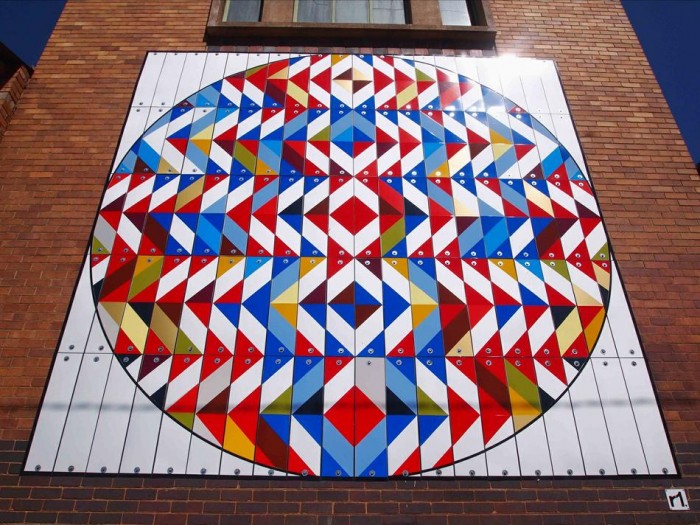Joburg-based street artist r1 uses chevron signs, wooden pallets and compact discs to create his projects, which he refers to as interventions. The artist credits his fine art background for his creative development.
His latest work uses one of the most popular objects that can be found on South African roads: chevron signs. He drilled holes into the plates for an installation which transforms the road signs into a type of mosaic patterning. The piece gets a different effect at night when the nighttime traffic lights collide with it.
Another one of his works in Johannesburg, called Hidden Trophy, is influenced by African craftwork designs usually found in bowls and plates. This 5 x 5-metre work is made up of 100 road signs that were collected in different colour schemes to form one singular mandala. In the blue outline of the colorful circular installation is the image of a wildebeest. The wildebeest was used to symbolise migrating people to the city in the hopes of bettering their lives. When cars drive past the piece at night, it illuminates.
In another one of his popular works, Yield, the artist set a street pole into the sidewalk and on the wall behind it, one hundred of the same signs were arranged in different angles. This project was designed to encourage citizens and visitors to the city to engage with one another and give way for each other as well as create activities to transform the city.









